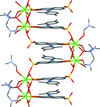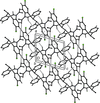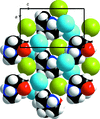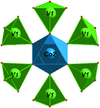issue contents
June 2019 issue

Cover illustration: For the first time, a cocrystal of the so-called calix[4]tube with a template bioactive compound belonging to the biologically relevant benzothiazole class has been observed, together with three new polymorphs of the same benzothiazole exhibiting infrequent packing polymorphism with high Z' (one with Z' = 8 and two with Z' = 4). See Alvarenga, Valdo, Ribeiro, Do Nascimento Neto, De Araujo, Da Silva, De Fátima & Martins [Acta Cryst. (2019), C75, 667-677].
scientific commentaries

research papers


















 access
access



































 journal menu
journal menu













































